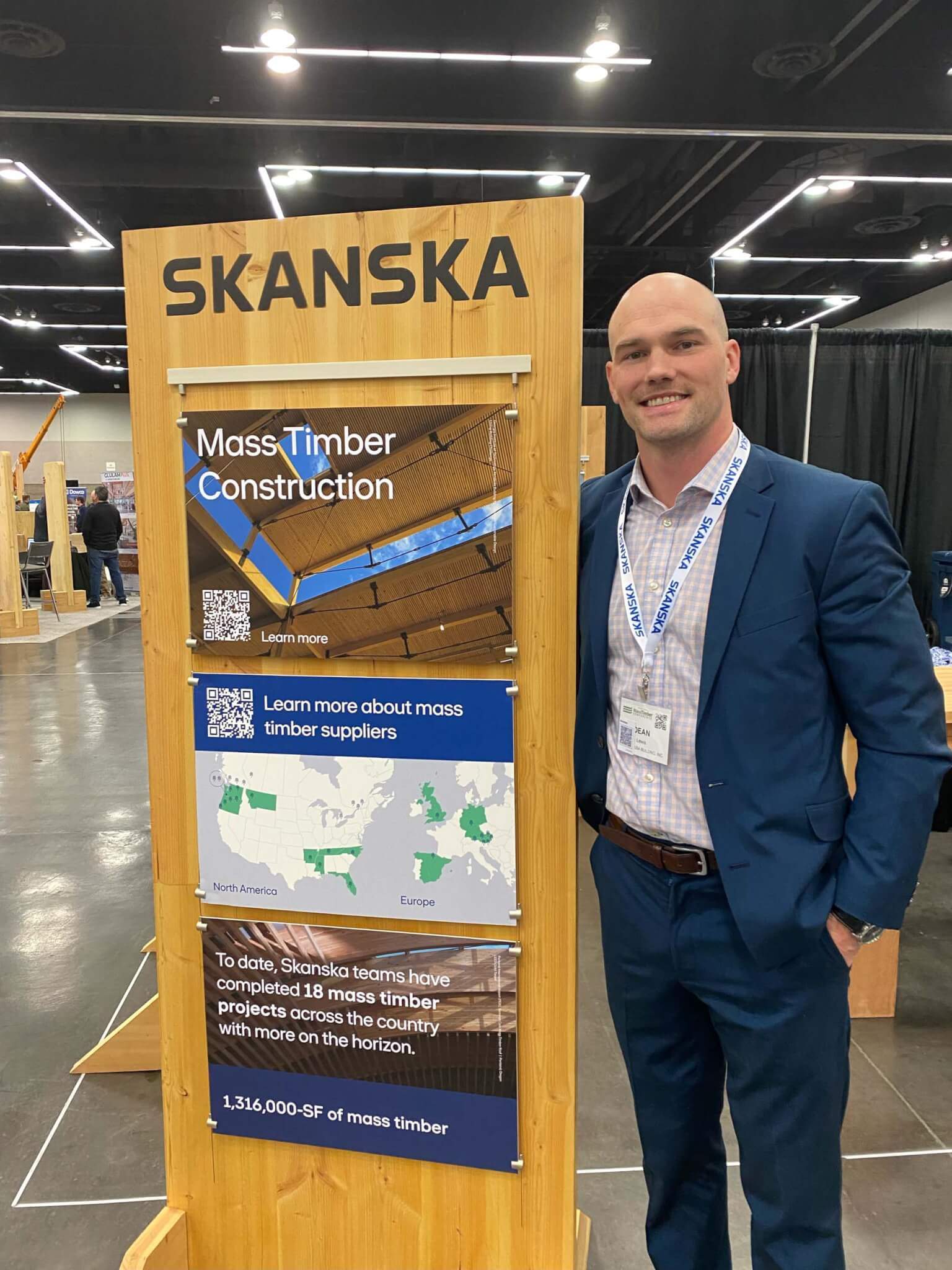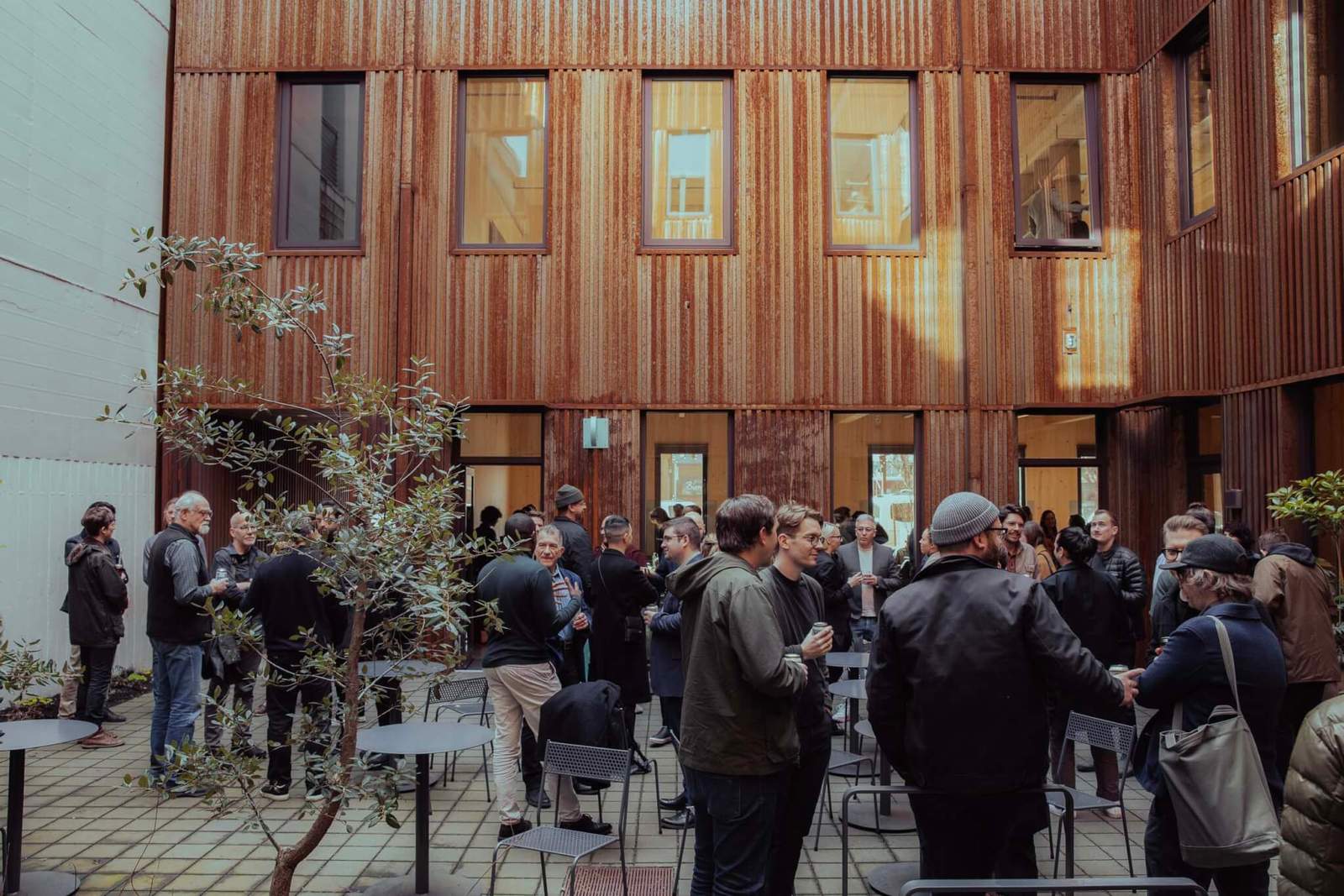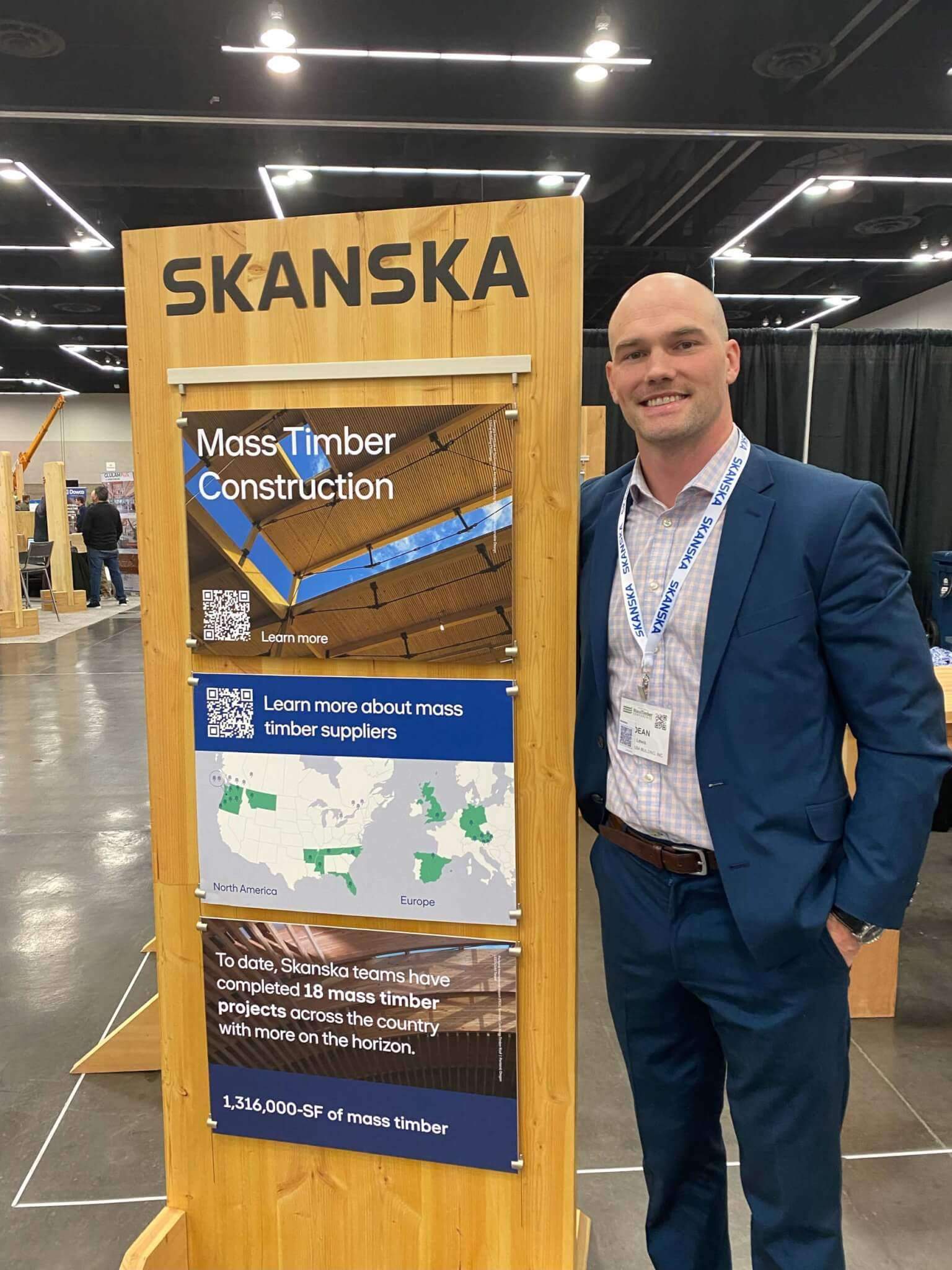The International Mass Timber Conference brought together architects, contractors, fabricators, and foresters
At the International Mass Timber Conference, held at the Oregon Convention Center in Portland from March 27 to 29, a mood of celebration filled the air as a series of overlapping communities came together to acknowledge and plan for mass timber’s growing (if still small) presence in mainstream construction.
While some industries may be struggling to attain pre-COVID attendance levels, according to Arnie Didier, cofounder of the International Mass Timber Conference and COO of the Forest Business Network, the International Mass Timber Conference “had just under 3,000 this year, almost double our 2019 numbers.”
The packed exhibit hall was a case in point. “There’s clearly a tide raising all ships,” said Dean Lewis, who directs mass timber and prefabrication for construction giant Skanska USA and has attended the conference since its outset in 2016, when there weren’t enough booths to fill the space. Now, however, “In this hall we’ve got fabricators, installers, suppliers. You’ve got people that sell the equipment, people that sell coatings. There’s even a glue booth.”

The opening keynote was a panel discussion about equity in mass timber and beyond hosted by Portland developer and U.S. Green Building Council board chair Anyeley Hallová. “Real estate development in the United States is almost exclusively white,” Hallová said, citing figures showing less than one percent of U.S. real estate developers are Black or Latinx, only 2 percent of licensed architects are Black (just 0.4 percent Black women), and 0.2 percent of construction companies are Black-owned. Yet the mass-timber movement’s relative newness in America means opportunity. “We can’t wait for something to move forward before we make it equitable,” panelist Chandra Robinson, LEVER Architecture principal, said. “We have to start with equitable practices.”
A keynote the following day featured Vancouver, Canada architect Michael Greene, who presented “Buildings of the Future: The Next Evolution of Wood.” Recent work by Greene, long among the profession’s foremost advocates for tall wood buildings and skyscrapers, includes 2020’s Peavey Hall for the College of Forestry at Oregon State University, which featured the first CLT rocking wall system in North America, able to move and self-center during an earthquake.
The conference brought together a constellation of architects and academics. Members of Pritzker Prize–winning architect Shigeru Ban’s firm were here to promote its new book Timber In Architecture. Though Ban may be best known for experimenting with paper structures or pursuing humanitarian design solutions, he is also a timber innovator. “It’s not wood for wood’s sake,” cautioned Dean Maltz, partner at Shigeru Ban Architects. “He’ll pick the appropriate material for the appropriate place.” Yet the book makes a point of highlighting process and collaboration: It shows how to work with structural engineers and other partners to stretch wood’s material capabilities.

Lindsey Wikstrom was at the conference for an event celebrating her book Designing the Forest and other Mass Timber Futures. A founding principal of Mattaforma and a professor at Columbia GSAPP, Wikstrom calls for architecture, material sourcing, and forest management to be considered together as a single design problem. She said writing Designing the Forest was “about inspiring young architects to know their worth: that they have agency in a climate emergency to do work that matters,” Wikstrom explained.
Wikstrom spoke at Mississippi, a mass-timber building designed and occupied by Portland firm Waechter Architecture, which recently won a 2023 WoodWorks National Design Award in the Commercial/Mid-rise category from the Wood Products Council and Forest Business Network. (The latter produces the International Mass Timber Conference). The building completed in 2022, and its cross-laminated timber (CLT) was imported from Europe, firm founder Ben Waechter explained, because local providers couldn’t handle its extra details, such as a CLT core and stairs. But were it constructed today, Waechter explained, Mississippi’s wood would be locally sourced.
That growing regional capacity can also be seen in larger-scale projects like the Portland International Airport’s renovation, currently under construction and designed by ZGF Architects, which includes a mass-timber ceiling of some 380,000 square feet, or nine acres. The wood was sustainably harvested within 300 miles of the airport and can be traced back to 11 landowners in Oregon and Washington.
How much market share are mass timber—and CLT in particular—gaining? According to separate research by IMARC Group, the global CLT market is projected to experience a 12 percent annual growth rate from 2023 to 2028, reaching about 45.7 million square feet. “There was a lot of work done on the codes for the 2021 code and the 2024 code. A lot of those hurdles are being cleared now with time and expertise, whether that’s in commercial buildings, tall wood buildings, or modular affordable housing and residential,” Didier said. “You’re starting to see some of those switches as well.”
Even so, IMARC projects that by 2050, CLT would represent about 0.5 percent of new urban buildings: a still very modest share of the market. That’s why another key community at the International Mass Timber Conference, the timber industry, is retaining a healthy skepticism.

“Most folks are more than willing to be part of the mass timber solution. But it’s not actually a place yet that it’s driving demand,” said Joseph Furia of Portland’s World Forestry Center, a nonprofit devoted to sustainable forestry. “There are a lot of pain points in the system that are making it difficult to scale. How do we change that math? I run into people who are saying, ‘Where’s the beef?’ Show me the that you’re actually going to be able to do this project faster, cheaper than conventional products.’”
The 2023 International Mass Timber Report, released at the conference, says that while mass timber can cost up to 15 percent more than conventional construction, the median project premium is actually less than two percent. But, the report cautioned, these figures do not consider mass timber buildings’ “additional potential to capture more in lease rates and lower tenant turnover,” or to reduce construction time up to 25 percent.
“We still have a shortage of builders and projects looking at mass timber because it has to be fabricated in a factory, and that’s a very different way of building that most of the construction industry is not familiar with,” explained Greg Howes, a partner at Portland-and Vancouver, Canada–based mass-timber manufacturer Cut My Timber. “They don’t know how that will impact the labor cost. So you have a lot of bidding that’s happening based on minimal experience. But that’s inevitable in a market where it’s a relatively new project. Essentially, we have a very, very limited supply chain. But a lot more is about to come online.”
Brian Libby is a Portland freelance journalist who has contributed to The New York Times, Metropolis, Dwell and The Wall Street Journal.

